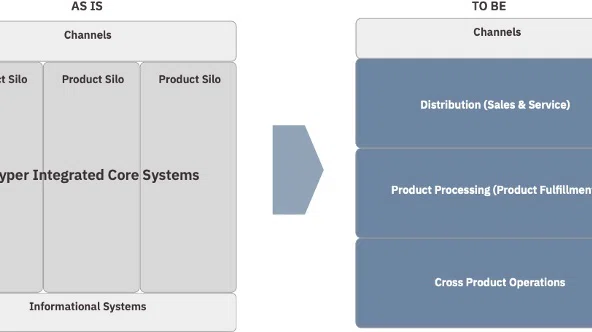The Internet is going through a transition. This happens every 15-20 years, and it usually brings disruption to entire categories and business models.
Because blockchains and cryptocurrency came into their own over the last decade, they straddle the fence between two phases of the Internet - the phase we’ve been in for the last 15 years, and phase we will be in for the next 15. So while crypto is technically one industry, there are two distinct parts, with glaring differences in user experience and business model.
Are they complimentary or competitive?
Let’s zoom in…
Phases of the Web
The Internet goes through phases, distinguished by how we interact with it. Anyone using the Internet in the 90s knows that the experience today is radically different than it was 25 years ago. We went from casually browsing web pages for news to being able to create the news for millions of subscribers.
New phases are ushered in by innovation, usually far enough down the Internet tech stack to be invisible to most people (i.e. blockchains). But, each phase enables a new engagement dynamic between the Internet and its users.
The transitions don’t happen instantly either. It is a gradual evolution, one fading away slowly (or just not growing) as another rises to prominence.
Web 1.0 (1989 - 2005)
The first phase of the Internet was the static information web. You were “surfing the web,” consuming content that used to live in a newspaper, magazine or encyclopedia. There was a bunch of stuff to look at, and you could…look at it! The user experience was very one-sided. The ability to interact was limited to basic communication tools like email, message boards, and instant messenger.
In hindsight, Web 1 was as its name suggests…one-dimensional.
Web 2.0 (2005 - Present)
Web 2 is the writable web. Users are not only consuming content, they are creating it. Web 2 is defined by social media (Facebook/Instagram), user reviews (Yelp, Amazon) and collaborative projects like Wikipedia.
Web 2 is also defined by the dominance of platforms. When you look at the Web 2 landscape, a few large platforms reign king - Google (search), Facebook (social), Amazon (storage), and Netflix/YouTube (digital media). They own all the users and data, and as a result, capture all the value creation.
This has led to a highly centralized ecosystem, with data privacy and anti-trust concerns.
Web 3.0 (Present - Future)
We are entering the third phase of the Internet, often called the semantic web. In the future, the Internet will automatically interact with systems, people and devices, reliant on decentralized protocols like blockchains to support these interactions.
Web 3 will introduce hundreds, may be thousands, of decentralized protocols that replace their Web 2 analogues, doing with open source software what the previous phase did with giant corporations operating large platforms.

A Tale of Two Cryptos
Web 2.0 Crypto
Bitcoin was born in 2009, in the heart of Web 2. Naturally, the industry that formed to support crypto adopted the models that existed at the time.
Just like other Web 2 verticals, crypto is dominated by a few large platforms that own the users, data and revenue. Centralized exchanges have the same business model as their online brokerage platform cousins (i.e. trading fees), and the same relationship with the user as their Web 2 neighbors (siloed identity and data).
Based on the above, you could say that Web 2 treats crypto as simply a new asset class, plugging it into existing market structures like another stock in your portfolio. Over the last decade, the vast majority of crypto transactions have taken place off the blockchain on exchanges’ internal ledgers. If you are buying and selling crypto exclusively on exchanges, there’s a good chance none of your activity has ever hit the blockchain.
All the economic activity lives at the platform level, and consequently, all the revenue too (i.e. fees). As a user, your identity and data lives at the platform level as well, just like Facebook.
If I sound like I’m taking the piss out of Web 2 crypto, it’s only because we are a few years into a new phase with far superior dynamics. But the truth is Web 2 crypto has created enormous value, helped introduce hundreds of millions of people around the world to cryptocurrency, and supported institutional adoption. I am incredibly grateful. The business models that exist aren’t bad, they are just representative of the times.
And times are changing.
Web 3.0 Crypto
Web 3 crypto started in 2015 with Ethereum. We needed an application agnostic platform that could support new decentralized protocols, and Ethereum delivered in spades with smart contracts.
What came next was a wave of decentralized protocols for everything from asset exchange to insurance.
Where Web 2 crypto was defined by centralized platforms with platform-centric business models, Web 3 crypto is defined by decentralized protocols and new mechanisms for value creation.
Web 3 sees crypto not as simply a new asset class, but as a new financial system, that establishes new market structures and enables new ways of interacting with users.
This is what new phases of the Internet are all about.
The best example of the difference between Web 2 and Web 3 is comparing Coinbase and Uniswap. Coinbase is the poster child for Web 2 crypto; Uniswap the poster child for Web 3. Coinbase is a company, operating a centralized exchange and order book that holds crypto on behalf of its users. It charges fees for trades and keeps 100% of its revenue. Uniswap, on other hand, is a protocol not a company. It provides decentralized exchange services, and does so without holding customer funds. Like Coinbase, Uniswap charges fees for trading, but 100% of the revenue goes to liquidity providers, not Uniswap.
The same comparison applies to a centralized lending platform like Blockfi and decentralized lending protocols like Compound or Aave.

Different but Dependent
We are in a transition period between Web 2 and Web 3 where crypto exists in two phases of the Internet at the same time.
But they aren’t mutually exclusive. In fact, one relies on the other (for now).
Crypto’s Web 2 platforms (Coinbase, Gemini, Kraken, Binance) serve as onramps for Web 3, converting fiat to crypto. Once you’re in crypto, you can take advantage of Web 3 without dependencies. But if you want to cash out, you need to go back to Web 2 platforms to convert your crypto back to fiat.
Two things come to mind when I think about this. First, Web 2 serves as a gatekeeper for Web 3. You can’t get to one without going through the other. The second is that Web 3 has by necessity outsourced costly operational overhead to Web 2 - custody, compliance, customer support, insurance and more.
This leads to an interesting dependency - without Web 2 platforms, Web 3 would have a hard time attracting net new users and liquidity. Without the allure of Web 3, there would be less demand for Web 2 services. For now, there is a symbiotic relationship between the two.
Parting Thoughts
If we fast forward 5 years, how do things play out? Is Web 2 crypto a thing of the past? My hunch is the major exchanges still play prominent roles, but growth may be stagnant. Web 3-native wallets and interfaces are capturing the majority of new users.
Where the Web 2 platforms have an opportunity is by serving as the interfaces for Web 3, while continuing to provide the experience, support and protections the average user expects.
Do I think most will do it? No. I think most Web 2 platforms will double down on the strategies that have made them successful to date. The market structures and business models for Web 2 don’t have the same value capture in Web 3.
It’s a completely different game.
Thanks for reading,
Andy
note: this article was first published here













